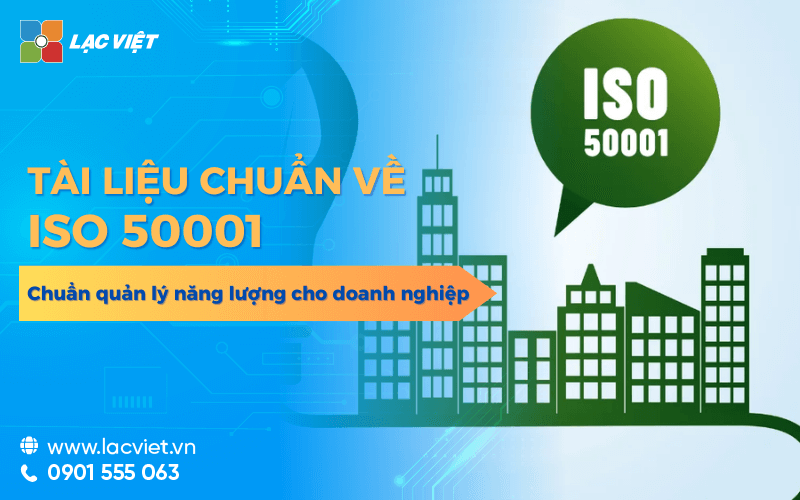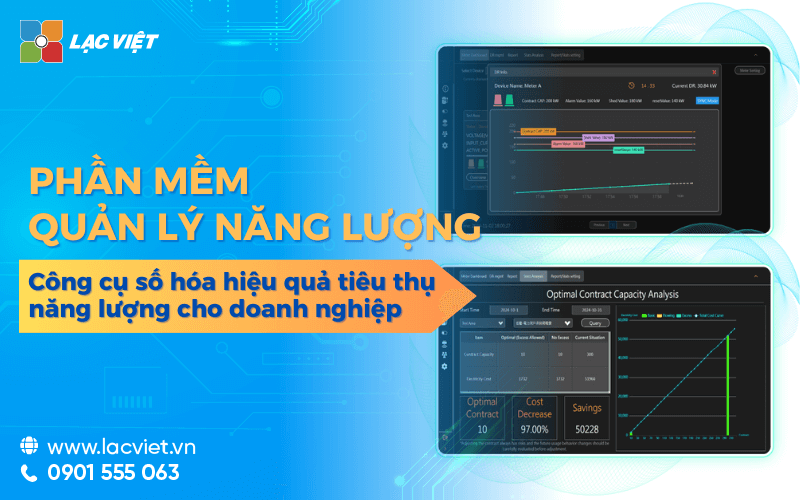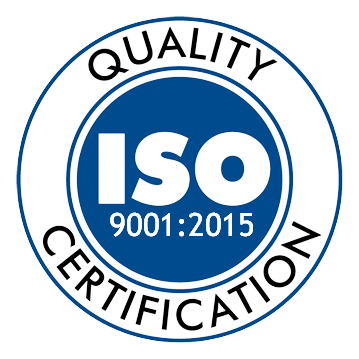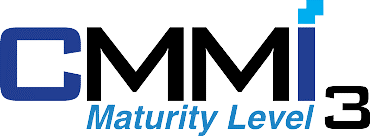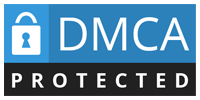In the context of the global economy are strong shift towards green growth, businesses today are faced with a double pressure: medium to optimize operating costs just to reduce greenhouse gas emissions to meet the requirements of increasingly demanding from the market, investors and regulators. In that ISO 50001 is one of the standard enterprises need to meet if you want to participate in the global supply chain.
This article Lac Viet Computing will provide the angle of view in full to understand about ISO 50001 from concepts, main components, processes applied to practical benefits that the organization, the business can achieve, if properly implemented.
1. Overview of ISO 50001 is what?
ISO 50001 is an international standard of management system, energy is built by Organizing international standardization (ISO) issued to help businesses set up a scientific management system to use energy more efficiently.
Learn a simple way, ISO 50001 like a “map act” to help businesses monitor, evaluate and continuously improve the way to use his energy. Instead of just cut energy according to the sense or measure the business will have a system to:
- Accurate measurement of energy consumption
- Detect the points loss, use irrational
- Set specific goals to improve step by step
This is not just a management frame that is a strategic tool to help businesses:
- Reduce energy costs long-term
- Improve operational efficiency
- Reduce emissions of CO₂ a way to demonstrate measurable
- Increased ability to meet the criteria for ESG (Environmental, Social, Governance)
In the period that the global supply chain increasingly ask suppliers to have ISO certification related to environment and energy, owning ISO 50001 not only help business control costs, internal, but also create competitive advantage when working with large corporations, especially in Europe, America, Japan, is the market is leading the trend of green transformation.
This standard does not limit the scale or field applied. From manufacturing enterprises to office buildings, from hospitals to unit logistics, any organization that wants to use energy more efficiently can apply ISO 50001.
A point worth noting is ISO 50001 capable of flexible integration with other management system that the business may have previously applied. For example:
- ISO 9001 (quality management)
- ISO 14001 (environmental management)
- ISO 45001 (safety and occupational health)
Compatibility this helps businesses save time resources when deploying at the same time create a modern administration has high connection between the departments and the target operation.
In the context of the organization are directed to standard ESG or need to meet the regulations on carbon emissions in the supply chain, ISO 50001 is an important foundation to implement, bringing benefits are clear, measurable.
- CBAM is what? What should prepare to cope with adjustment mechanisms border carbon of the EU?
- CERS what is? Comprehensive certificates of emission reduction CERS for business
- Standard ESG is what? Complete guide to analysis and meet ESG effectively
- GHG Protocol what is? Implementation guide standard measurement international for business
2. The core objective of ISO 50001 is what?
ISO 50001 was born with the purpose of helping enterprise organizations use energy efficiently, systematic, and continuous improvement. This is not a set of technical standards dry which is a management tool, practical for business control, evaluation and improve the energy consumption during the entire operation, production and business.
Specifically, this standard guide to three main objectives:
Firstly, the management system energy use.
Instead of to each order parts operate own way, ISO 50001 help businesses establish a management process energy are clearly assigned responsibilities, which control rules and regulations how to measure. Like the reorganization of “energy flow” in business to every operation is optimum control over.
Monday, continuous improvement, effective use of energy.
This standard not only focus on achieving an index specific savings at the present time, which insist on the continuous improvement over time. Literally every year, businesses are able to look back at results and detect waste, set new goals to improve efficiency. This is how to save cost long to create competitive advantage and sustainable.
Tuesday, reduce emissions greenhouse attached to sustainable development.
ISO 50001 not only the internal values in business but also contribute to the global environment. When businesses consume less energy synonymous with the emissions of CO₂ also decreases. This is important factor in the context of Vietnam and many countries have committed to reach the level of emissions to net 0 (Net Zero) in the next few decades.
3. The main components in the system energy management (EnMS) according to ISO 50001
To implement ISO 50001 effective, businesses need to establish a System of energy management EnMS (Energy Management System). This is the framework that helps enterprises monitor, control energy rigorously scientific.
A system EnMS standard usually consists of four core components follows:
3.1. Energy policy
This is the formal commitment of the leaders of improving the efficiency of energy use. In this policy, the enterprise can now clearly the direction, priorities, objectives and sense of responsibility for the use of sustainable energy. This policy should be disseminated to all employees view as guideline in all decisions related to energy.
3.2. The evaluation of the energy consumption current (Energy Review)
This step is the same as the “health check” power of the business. The organization will statistics on energy consumption in each department, equipment, line or area. Through which identified the area consumption for the hot waste or potential improvements. This is the basis to come up with a plan specific actions instead of guessing or feeling.
3.3. Set indicators to measure energy efficiency (Energy Performance Indicators – EnPIs)
The index EnPI help businesses track compare energy performance over time. For example:
- Number of kWh consumption per unit product
- The cost of energy per square meter office. The index is the same as “map controls” shows the energy consumption are, for better or worse from that timely adjustment.
3.4. Goal setting, action plans, and monitoring improvements
From the data collected, the business will:
- Set goals specific, measurable (for example: a 10% reduction in energy consumption in 12 months)
- Action plan details: investment in equipment power saving, changing operating procedures, personnel training...
- Track results and adjust if has not achieved as expected
When system EnMS post office business:
- Easily detect early losses, or equipment operation less effective
- Has transparent base to report to the leader board, investors, or international customers
- Create a management platform that can expand as business grows more plants, branches, or apply the certificate higher as ESG, ISO 14001, Net Zero...
4. ISO 50001 required? When should I deploy?
ISO 50001 is not a mandatory standard under the provisions of the law. However, in the context of the world are increasingly considered important criteria for sustainable development, environmental responsibility, ISO 50001 is gradually becoming a requirement mandatory in the actual market, especially with businesses involved in the global supply chain.
Currently, many multinational corporations and big brands in the world have put ISO 50001 certification in the category selection conditions supplier. This is how they ensure that the partners in the value chain of his own well being comply with the principles of energy use efficiency, reduce greenhouse gas emissions, comply with the criteria for ESG.
In other words, although the law has not required, but the market is setting new standards, and the business does not keep up will likely be out of the game.
When should implement ISO 50001?
Here is the point business should seriously consider implementing this standard:
- When the cost of energy accounts for a large proportion in manufacturing operations, business. For example: food processing industry, metallurgy, cement, transportation...
- When businesses are scaling would like to standardized management system, ISO 50001 helps control energy efficient right from the first stage to avoid wasting.
- When businesses want to participate in the international supply chain, or call capital. The certified energy manager is a plus point in the record ESG helps increase credibility with investors and foreign partners.
- When businesses set goals, sustainable development, carbon emission reduction ready for the future requirements such as Net Zero. ISO 50001 is the first step to firmly take measurement are recognized worldwide.
In summary, ISO 50001 is not “barrier mandatory” that is a strategic opportunities for businesses to optimize cost, enhance the prestige create competitive advantage long-term. Any business actively apply soon will be the leads in the wave of green transformation is happening increasingly powerful.
5. Process of implementing ISO 50001 in business
Here are 5 steps to deploy standard ISO 50001 with step by step are associated with the practical benefits that businesses can get.
Step 1: Commitment from leadership
All changes effective in business all need to start from the top down. In the first step, leaders should demonstrate a strong commitment to improving the efficient use of energy not only by words but by action specific: budget allocation, specify the person in charge, integrated energy goals into strategic commissioning.
- Establish clear direction from the start
- Motivate the entire staff involved
- Easy to mobilize internal resources when there is support from senior leadership
Step 2: assess the current state of energy consumption
In this step, the business will proceed to revise the whole situation of energy use in its activities: from production equipment, lighting systems, air conditioning to operate the warehouse office. The goal is to identify the area consumption, the points have the ability to cause wasted energy.
Values bring:
- There is a panoramic view of the energy consumption current
- Detect “hot spots” consume power that previous business has not uncle
- Create a database for decision-making improvements grounded
Step 3: set system energy management (EnMS)
From the information collected, the business began building systems, energy management according to ISO 50001 includes: energy policy, indicators (EnPIs), objectives, action plan and method of periodic monitoring.
Values bring:
- Process post to control continuous improvement
- Mounted energy into the operating system instead of managing discrete
- Increase the ability to analyze, forecast and adjust consumption to seasonal, capacity or scale of production
Illustrative example: A factory manufacturing aluminum construction dashboard monitor battery consumption of each line by the hour. The results showed 2 lines operate asynchronously causes of excess power – they adjust the work schedule to the optimum, reduce the consumption markedly.
Step 4: Training, commissioning and adjustment
After the system is set up, the next step is the training of staff and employees so they understand and practice the correct process. Businesses can run tests in a workshop, or small area first, then adjust if necessary.
Values bring:
- Increase compliance efficiency when deployed on a large scale
- Minimize errors or resistance internal thanks to training the right way
- Facilitate process improvement based on real feedback
Step 5: evaluate internal and externally certified Tuesday
Finally, the business will conduct internal audits to check whether the system is functioning properly requires not yet. Then can invite the certification independent (the Tuesday) to level assessment certificate ISO 50001 if unsatisfactory.
Values bring:
- Obtain a certificate of international recognition, increasing reputation in the market
- As a basis for reporting to customers, investors or when participating in a tender
- Assert capacity management, professionalism of the business.
Process of implementing ISO 50001 however, there are many steps, but each step brings value clear long-term for the business. From the cost savings, improve operational efficiency, to increase credibility in the supply chain – ISO 50001 is a solid foundation for enterprises to move forward on the transition road green development sustainable.
6. Practical benefits when businesses adopt ISO 50001
The application of ISO 50001 is not merely perform a standard set of techniques that is step strategy to help businesses optimize operating costs, enhance reputation and meet the requirements for sustainable development in the long term. Here are the obvious benefits businesses can expect when implementing ISO 50001.
6.1. Reduced 5-20% in energy costs after only 1 year
According to the report of the Organization of Industrial development of the united Nations (UNIDO) in the year 2023, the business after implementing ISO 50001 correctly can save from 5% to 20% in energy costs in just the first 12 months.
The cause is due to the system power management enables enterprises to understand is energy consumption, where consumption, how much is wasted or not. From there they have the facility to adjust the equipment, processes, behavior, energy use in a scientific way.
Practical example: A textile factory in Binh Duong, after implementing ISO 50001 has been conducted replacing traditional lighting with LED lights, combined with the adjustment of duration of operation of the boiler according to the time frame lower score. Results after only 8 months they save more than 300 million coins generator not including benefits of reduced depreciation of equipment increase the lifespan of machinery.
6.2. Support businesses achieve goals Netzero, reducing emissions CO₂
One of the positive results most clearly when businesses use energy more efficiently is to reduce greenhouse gas emissions, especially CO₂ main factors that cause climate change.
In the global trend toward a goal Netzero (emissions net of 0), ISO 50001 role as a measuring tool to manage emissions a proactive, transparent, internationally recognized.
Values bring:
- Support construction business report ESG, fully convinced
- Create a platform to participate in the program credit carbon or deals from the fund supports converting green
- Contribute to enhance the image corporate responsibility to the environment – factors is increasingly consumers, investors/partners appreciate
6.3. Increased operating efficiency and competitiveness
ISO 50001 helps enterprises not only saves energy costs, but also upgrade the whole system to operate in the direction streamlined, standardized better control.
Specific:
- Reduce the overload device due to irrational use
- Early detection of points of congestion in terms of energy consumption affect production performance
- Optimal operation schedule, improve equipment life, reduce maintenance costs
From there, businesses can reduce financial pressure, at the same time increase production capacity and supply, without the need to expand the scale of new investment, create competitive advantage pronounced about the response time and quality service.
6.4. Create credibility, standardized management and enhance business image
Today, customers especially the multinational corporations increasingly rigorous in the selection of suppliers. They not only reviews about the prices or quality of the products, but also interested in the level of compliance with environmental and transparent operation.
ISO 50001 bring to a business:
- A certificate is internationally recognized in the energy management system
- The advantage to overcome the supplier assessment of large customers
- Meet compliance requirements from regulatory authorities in the country and international related to emissions, energy efficiency, environmental safety
In particular, in the context of conversion of green transformation is happening in parallel owning ISO 50001 will help businesses demonstrate professional image, responsibility, readiness, integration, from which attract more investment, personnel quality and opportunities of international cooperation.
7. Frequently asked questions when implementing ISO 50001
7.1. How long does it deploy the finished ISO 50001?
Duration implement ISO 50001 depend on the scale of level of readiness of the business. With small and medium enterprise management system is relatively simple, the construction of the application can take from 3 to 6 months. With the big business, operating many parts of duration can last from 6 to 12 months including the stage of evaluation, improvement and certification preparation.
However, it is important that businesses do not need to do all at the same time. Can be divided into small stages, test implementation in a factory, branches or departments before then replicated. This moderate decrease in internal pressure, just help draw practical experience.
7.2. Business can implement ISO 50001 or need to hire a consultant?
In theory, businesses can implement ISO 50001 if there is human understanding of energy management to grasp the standard structure. However, in fact, the majority of businesses will need support from the consultant at least in the first phase to:
- Properly understand the requirements of the standard
- Reviews the current state of energy consumption
- Set management system in accordance with the scale, particular business
Special consulting to help enterprises shorten deployment time, avoid errors, build the necessary materials to serve for the evaluation process certified.
Some businesses choose the combination: hire a consultant in the stage of initial setup, then self-sustaining improvement. This is the go energy efficient if the business has a team of personnel enough internal capacity to learn marketing management system.
7.3. The cost of the initial investment and the return obtained (ROI) out?
The cost of implementing ISO 50001 includes:
- Cost reviews the current state of building systems
- The cost of training personnel to operate
- Costs certified by the independent organization (if business want to have certificate)
Depending on the scale, this cost ranges from 50 million to 200 million to small and medium enterprises, or may be higher with the business are complex systems.
However, the majority of business will recoup the investment within 12 to 18 months through:
- Save water, electricity, fuel
- Reduce operating costs, maintenance
- Increase reliability in the system and reduce the risks equipment
7.4. Small business should adopt ISO 50001 not?
The answer is: should and could totally apply.
ISO 50001 does not limit the scale applied. Even, many small businesses is the main unit see the effect most pronounced when controlling energy better. With operating costs accounted for a large proportion of the total business costs, reducing power, gasoline or gas will directly increase the profit margin.
In particular, this standard allows for customization according to the actual capacity business. You don't need to invest in a series of new equipment or complicated software. Just start from the statistics of energy consumption, set a goal to improve small and then gradually expand.
No matter your business is big or small and medium-sized ISO 50001 can still be suitable design to create practical value, cost savings, enhanced performance towards green development. More important, each step of implementing the standard, this is also a step-affirm the commitment of the business with customers and partners. Let's start the journey management smart energy today.

